The Indian Army is unstoppable. It operates across various terrains in India, from the Himalayas to the deserts and forests. The Indian Army is everywhere to protect the nation. Considering this, the Indian Army uses different kinds of armored vehicles for protection and utility types for logistic support. For example, an armored vehicle such as a Mahindra Marksman is deployed in threat zones where the harm expected is from gunfire and blast, countermeasures thus protect the troops. Utilitarian cars, such as an Ashok Leyland Stallion, help in transporting supplies, troops, and equipment through tough terrain. These vehicles ensure mobility, logistical requirements, and public security, all of which are very much necessary for a full-scale range of operations in most adverse terrains in India.
This blog will let you know more about the Indian Army Vehicles, in detail, along with their features and launch date.
Key Features of Indian Army Vehicles:
The Indian Army Cars offer security, mobility, and so much more. These vehicles are of strong build and hence stand tall among various army vehicles.
- Protection: The strongly built Indian army vehicles offer protection against Improvised Explosive Devices, wars, war trials, and small-arms fire.
- Mobility: These vehicles offer excellent off-road abilities with high-speed capabilities (up to 120 km/h).
- Payload and Capacity: They are designed for carrying heavy payloads (5-7.5 tons) either for troop transport or logistical support.
- Weapons and Defense Systems: The Machine Guns, the Grenade Launchers, and the Modern Battlefield Management System are mounted on these vehicles.
- Comfort and Functionality: Operating with air-conditioners and an onboard guidance system, they were designed to maintain the efficiency of the crew and operational capabilities.
Also read: Indian Army Adds Toyota Hilux to the fleet
What is an Armored Indian Army Vehicle?
Armored vehicle is a term in general for special vehicles whose surface has been treated with armor to defend against any threat that could be a bullet, an explosive, or some form of attack. Hence, the vehicle provides greater protection to its occupants as well as keeping its mobility in hostile and dangerous environments. These are primarily used by armed forces, law enforcement agencies, and other security agencies.
The following are the various armored vehicles in the Indian Army Vehicles List:
| Vehicle Name | Launch/Induction Date | Primary Use |
| Mahindra Marksman | 2009 | Urban warfare, counter-insurgency, VIP escort |
| Mahindra ALSV (Armored LSV) | 2021 | Special Forces, high-risk border ops, cross-border raids |
| Tata Defence Armoured Safari | 2015 | Armoured patrol in urban conflict areas, convoy protection |
| Tata Mine Protected Vehicle (MPV) | 2012 | Patrolling in mine/IED zones, troop safety during movement |
| DRDO WhAP (Wheeled Armoured Platform) | 2017 (demo) | Amphibious infantry transport, direct fire support, modular battlefield roles |
| BMP-2 Sarath (IFV) | 1987 | Mechanized infantry, amphibious combat operations |
Mahindra Marksman
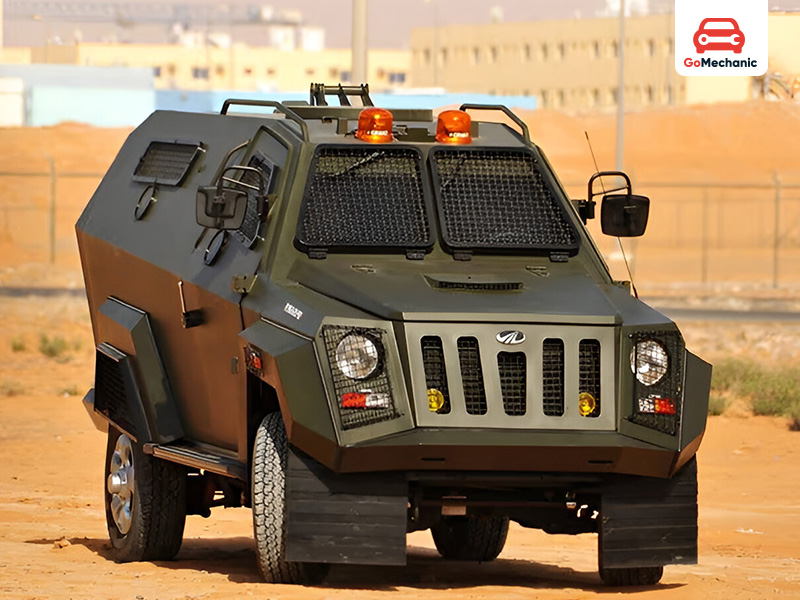
It is a lightly armored vehicle that is made for internal security, urban warfare, and counterterrorism operations. The small size, bulletproof protection, and easy mobility make it well suited for quick-response teams in urban setups or sensitive places like Kashmir and war-prone areas.. The vehicle is protected with STANAG Level I armor, meaning against small-arms fire and grenade blasts. It has a rotating turret hatch that can be used for fire while under cover, surveillance systems for situational awareness, and seats for six personnel. The Marksman was the first light armored vehicle to be developed in India, and this is one of those paramilitary and state police vehicles that have made their way into one of the choices for the Army. Active in convoy protection, patrol, and riot control duties, especially in highly sensitive areas, it truly serves the high-risk security requirements.
Mahindra ALSV (Armored Light Specialist Vehicle)

The highly mobile Mahindra Armored Light Specialist Vehicle was conceived and produced in collaboration with the Indian Army for Special Forces operations. More or less speed with off-road agility and ballistic protection for the execution of very intense and high-risk operations, especially in border areas and counter-insurgency zones, this 4×4 combat vehicle carries four fully equipped soldiers with mounts for machine guns or grenade launchers. It is armored to STANAG Level II, protecting against 7.62mm bullets and blasts from mines. It is small in dimension, so it’s convenient to be airlifted and to be deployed quickly. From being a versatile and highly mobile option, it was inducted into special forces formations of the Indian Army to augment their capability in reconnaissance, raids, and cross-border operations in hostile terrain.
Tata Defence Armoured Safari
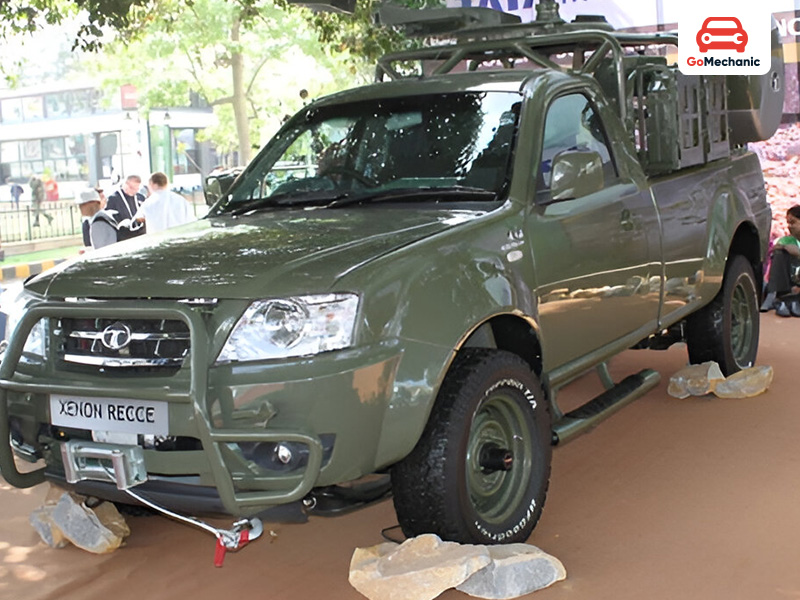
The Tata Defence Armoured Safari is militarized and bulletproof, offering discreet protection to personnel operating in high-threat environments. The vehicle provides B6 level ballistic protection, including bullet-proof windows, armored body panels, and underbody blast protection against grenade attacks. Designed chiefly for VIP escort, convoy duties, and low-intensity conflict zones, the Safari, despite being armored, still offers a level of mobility and comfort suitable for urban deployments, escort duties, and patrol operations.
Tata Defence Mine Protected Vehicle
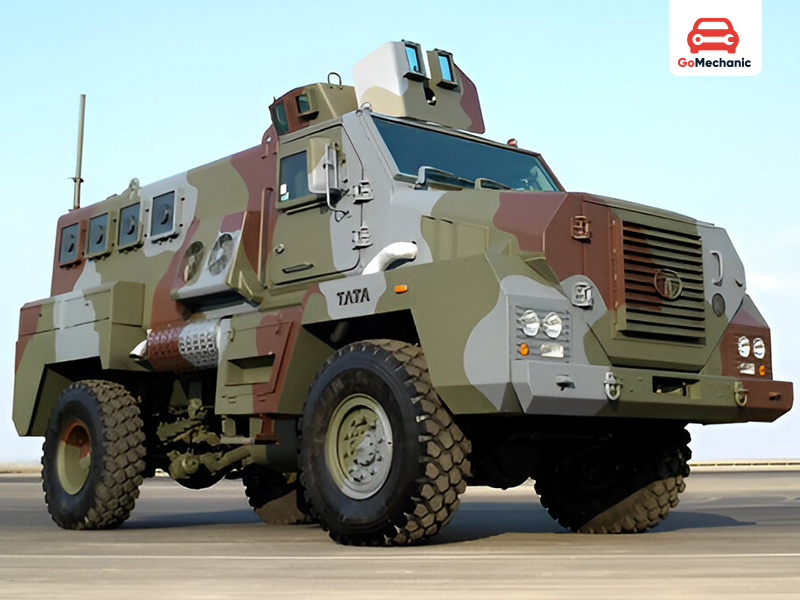
It was designed to operate in mine and IED-threat environments and thus form a life-protecting platform in areas where troops need transport in ambush-prone areas. The V-shaped hull configuration deflects blast energies emanating from mines or IEDs away from the crew cabin, thereby drastically reducing casualties from blast interaction. It carries 12 persons and has gun ports on either side and roof hatches for rostrum retaliation firing. The vehicle is mostly used in border and insurgency area patrols, offering an excellent balance of armored mobility with firepower and all-terrain capability. It is also used in rescue operations in threatened territories, where otherwise, normal vehicles are prone to threat.
DRDO WAP (Wheeled Armoured Platform)

The Wheeled Armoured Platform, known as WhAP, is an Indian first developed by DRDO and Tata Motors together. It transports and supports troops in reconnaissance and direct fire in high-threat environments. WhAP provides all-around ballistic protection by virtue of its composite and spaced armor and has a large capability, enabling its use in river crossing operations. The vehicle can be fitted with a 30mm cannon or stationary weapon systems such as a remote weapon station. It has modular configurations permitting it to be used as an ambulance, command vehicle, or mortar carrier. WhAP, being equipped with the latest electronic equipment and battlefield connectivity, is really a big leap forward for
Sarath (BMP-2)
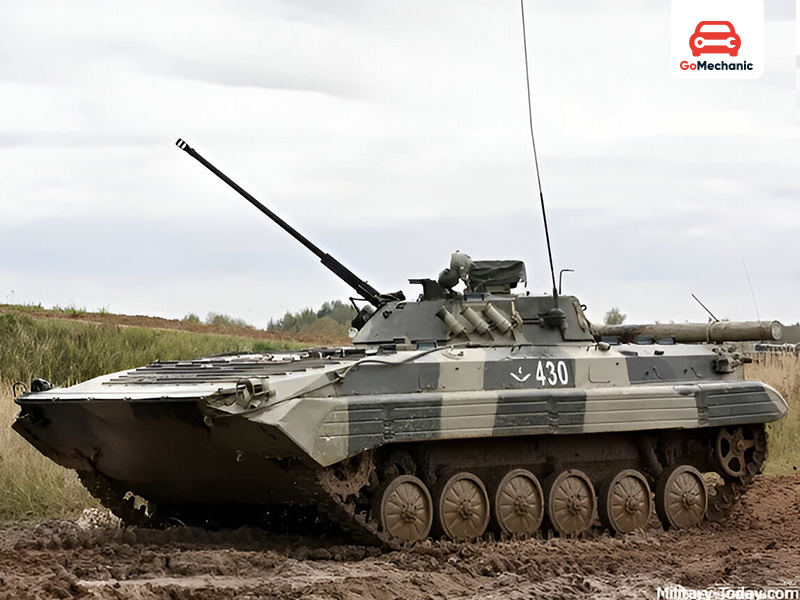
The BMP-2 Sarath marks the Indian licensed version of the Soviet BMP-2 amphibious Infantry Fighting Vehicle (IFV). Being the mechanized infantry workhorse of Indian mechanization, Sarath joins assault mobility, firepower, and protection to escort troops toward battle while engaging enemy personnel and light vehicles. It is fully amphibious, being able to operate in water-going off without preparation- armed with an automatic 30mm cannon, a coaxial machine gun, and an anti-tank missile launcher. The Sarath protects against small arms fire and artillery fragmentation, while its speed and maneuverability allow rapid repositioning on the battlefield.
Also read: Jonga | A Nissan Patrol made for the Indian Army
What are Trucks and Utility Indian Army Vehicles?
Trucks and Utility Vehicles constitute an important part of military logistics and operations. These vehicles are meant to carry heavy loads and transport people, and provide versatile support across terrains and operational environments. Armored vehicles protect in combat situations; trucks and utility vehicles protect mobility and logistical support.
Here is the list of various trucks and utility vehicles in the Indian Army Vehicles list:
| Vehicle Name | Launch/Induction Date | Primary Use |
| Ashok Leyland Stallion | 1990s | Medium-duty logistics: troop and supply transport |
| Tata LPTA Series (4×4–12×12) | 2008 onward | High-mobility logistics: missile launchers, radar units, troop carriers |
| Mahindra Armado (LSV) | 2022 | Quick-reaction force, light reconnaissance, patrol |
| Maruti Gypsy | 1985 (retired in 2018) | Reconnaissance, light officer transport |
| Tata Safari Storme GS800 | 2017 | Light utility, troop transport, replaces Gypsy in several formations |
| Force Gurkha | 2020s (Trial) | Jungle warfare, reconnaissance in rough terrain (under trial) |
| Mitsubishi Pajero | 2000s | Off-road patrol, mostly in Northeast and hilly terrain |
| Jonga (Nissan 1 Ton) | 1960s–1990s (retired) | Historical light 4×4 for patrol and troop movement |
| Shaktiman (MAN 415) | 1950s–1990s | Early logistics vehicle (retired), cargo, field kitchens, tankers |
Ashok Leyland Stallion

The Ashok Leyland Stallion series is a family of medium-duty tactical indian army cars that stand at the core of logistics operations of the Indian Army. The trucks are designed to carry troops and supplies across different terrains, such as plains and deserts or mountain tracks. Popular for their strong build, ease of maintenance, and very long service life, the Stallions are also offered in water tanker, fuel bowser, recovery, and field ambulance versions. With an ability to carry a payload from 5 to 7.5 tons and having configurations of both 4×4 and 6×6, while being shelter-mounted shelter compatible, the entire Stallion fleet undertakes logistical operations for the Indian military.
Tata LPTA (High Mobility Vehicle Series)

An array of LPTA-series Tata high-mobility trucks from 4×4 to the gigantic 12×12 has been present. The off-road application being hugely heavy-duty, the LPTA trucks have been critical in the ingress of strategic utilities like missiles, radar units, and bridge-layers. The LPTA trucks come powered by potent turbocharged diesel engines with all-wheel drive, along with modern suspension systems that keep them mobile in the harshest terrains ever. They are modular and can wear several coats: command posts, artillery gun towers, or troop carriers.
Mahindra Armado (Light Specialist Vehicle – LSV)
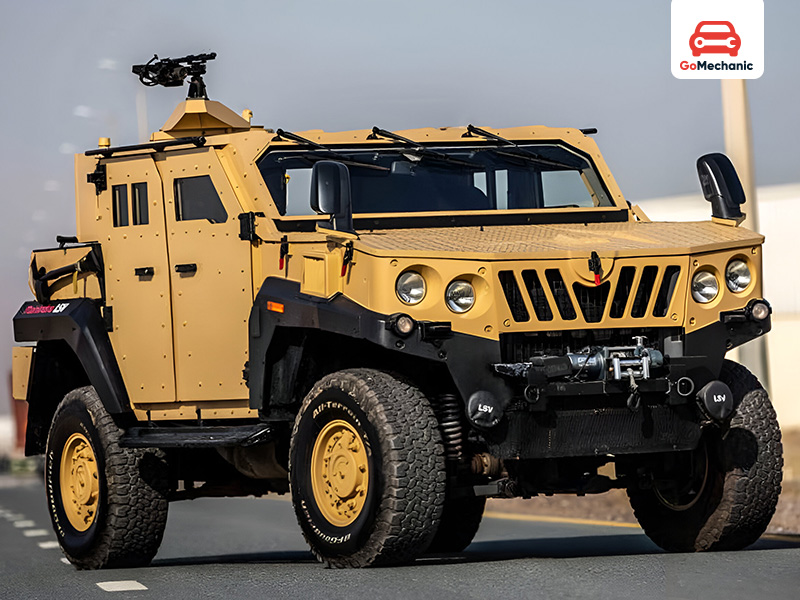
The Mahindra Armado is a modern Light Specialist Vehicle (LSV) for use in quick-strike and reconnaissance operations. The vehicle, with high ground clearance and independent suspension, provides ballistic protection on border patrol, special operations, and light assault roles. The Armado, by design, is modular, allowing it to be equipped with several weapon systems or, alternatively, be deployed as a support vehicle. The small footprint and all-terrain capability mean that the vehicle can be deployed swiftly for rapid response. Co-developed with inputs from the Indian Army, this is the light tactical vehicle for the future, produced in India.
Maruti Gypsy
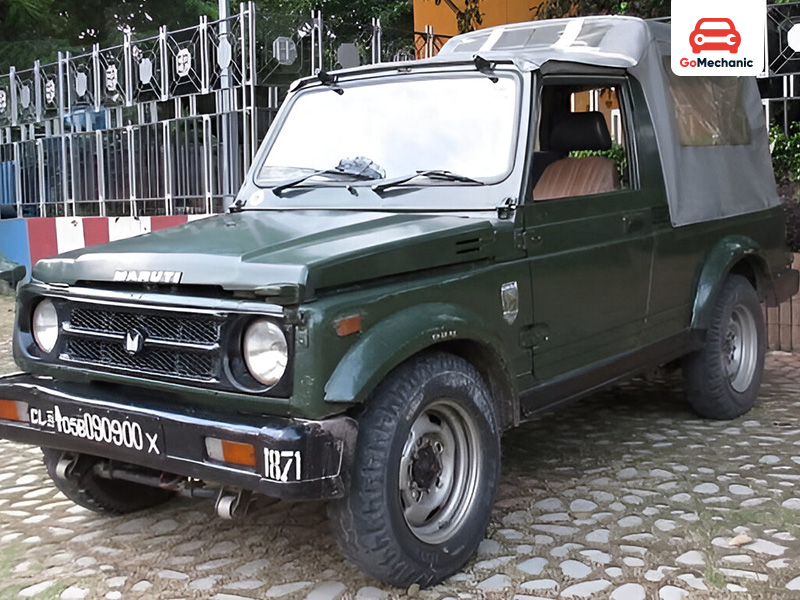
One of the standard sights on Indian military stations, the Maruti Gypsy is a 4×4 lightweight off-road automobile, which was, for some time, the choice for reconnaissance, light patrol, and transportation of officers. Its simplicity, durability, and easy maintenance made it suitable for Indian terrains. While it lacked the comforts of modern vehicles or offered advanced protection, its light frame and agility made it immensely effective in high-altitude areas such as Siachen. Despite its gradual phasing out in the favor of newer vehicles, the Gypsy still stands tall as an iconic vehicle in the Indian military history.
Tata Safari Storme GS800

Tata Safari Storme GS800 is a militarized variant of the Safari SUV. With enhancements to its engine, suspension, and 4-wheel drive system, the GS800 replaced many of the Maruti Gypsy vehicles as the Army’s light transport vehicles. It enhances the carrying capacity of personnel and equipment while offering increased security and comfort. The CSP (Civil Services Police) also added features such as blackout lights, towing hooks, and a roof hatch to the Safari Storme, thus providing the right amount of mobility to bridge the gap of sturdiness in performing the roles of patrolling and escorting.
Force Gurkha
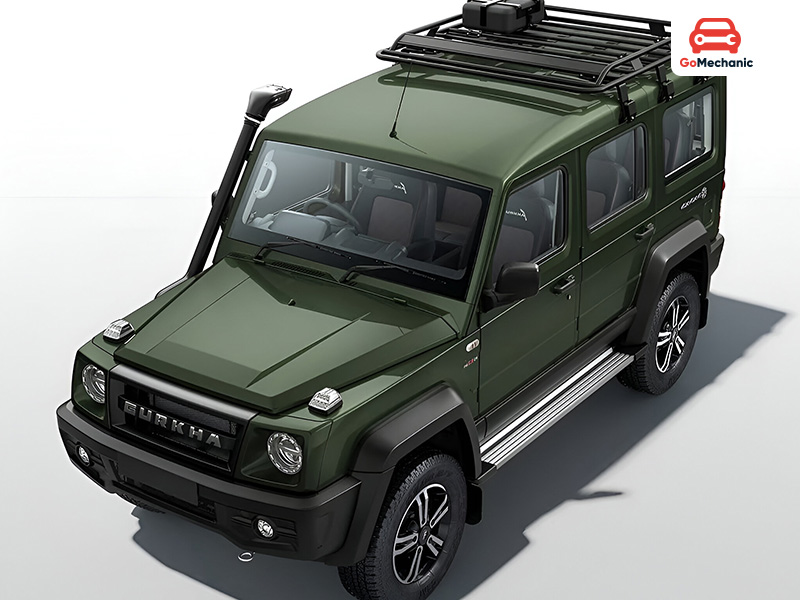
Force Gurkha is an imported, off-road SUV with a military pedigree and a rough build, standing up flexibly to rivals. The Gurkha, with its snorkel for water fording, Rigid Axles, and Solid chassis, is fit for jungle warfare, high altitude deployment, and reconnaissance. It is currently being tested and experimented in a few Army Units and a few ears of CAPFs for rugged tasks. For the design, it is a close copy of the Mercedes Benz G-Wagen, yet it is made in India, a costing option that is strong.
Mitsubishi Pajero
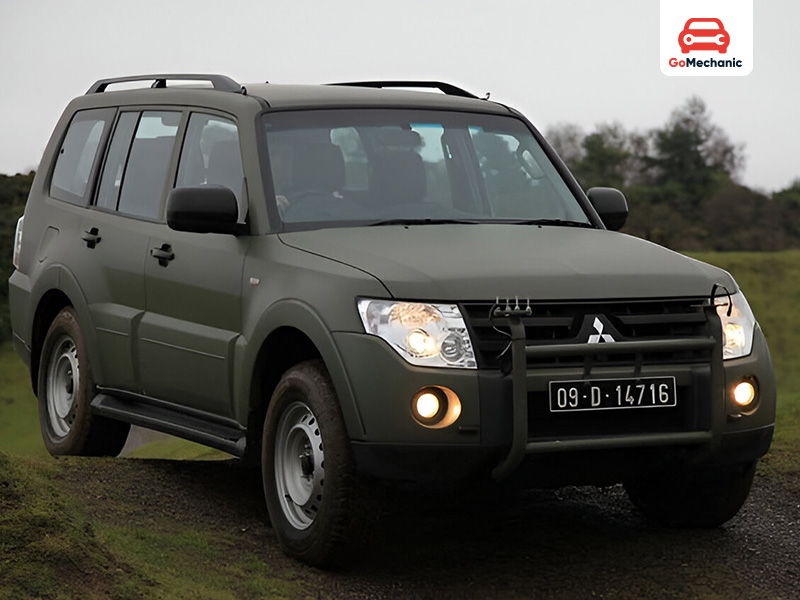
The Mitsubishi Pajero, generally more of a civilian four-wheeler, found military and border patrol roles in the vast configuration of terrains: a proven off-road machine with a big, strong diesel heart and durability. It generally came into use in the Northeast and Ladakh regions, where harsh terrain demanded a reliable 4×4. Though not indigenously made or one with heavy militarization, it certainly earned reliability to be its forte among numerous logistical and paramilitary VIP escort duties.
Jonga (Nissan 1 Ton)

The Jonga, an acronym derived from Jeep-One-Nissan Government Assignment, was an esteemed military 4×4 derived from the Nissan Patrol 4W73. It found service from the 1960s until the 1990s and gained fame in the annals of history for its ability to negotiate rough terrains and facilitate military operations. It is thought to be sturdily built and maintainable with less effort. The Jonga was axiomatically used for troop carriage, the mounting of weapons, and, in some instances, to ferry the wounded to medical aid. Although the vehicle is now retired, the Jonga stands as a historic milestone in the motorization journey of the Indian military.
Shaktiman
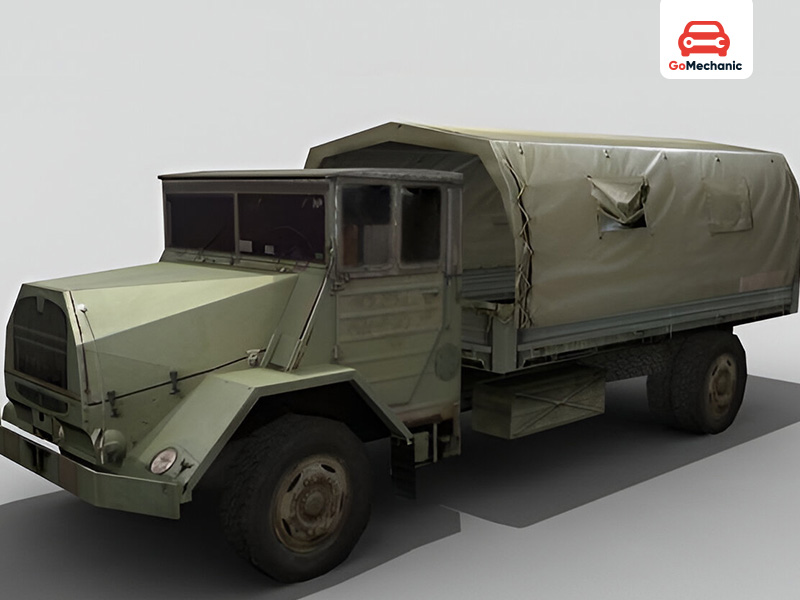
As the name suggests, this Indian Army Car, the Shaktiman, was a license-made truck by German MAN 415 in India, which was used extensively by the Indian Army from the 1950s to the 1990s. It was the primary medium-duty military truck for transporting troops and cargo. With a rated capacity of about five tons, it had the flexibility to be configured in variants such as cranes, fuel carriers, and even field kitchens. While the vehicle was superseded by the Stallion and other newer vehicles, the Shaktiman no doubt served as the backbone of India’s initial post-independence military logistics.
Excited to know more about brilliant army vehicles, read this.
Conclusion: Indian Army Car
Indian Army Vehicles ensure the transportation, protection, and shaping of the operational efficiency of its troops on very hard terrains and hostile environments. From various armored vehicles such as Mahindra Marksman or Tata Mine Protected Vehicle to high-mobility trucks like the Ashok Leyland Stallion or the Mahindra Armado, every vehicle was designed to provide just the apt needs of operational scenarios. Made from top-grade materials and the best protection systems and technology, these vehicles are truly indispensable for India’s strategic defense purposes. As the Army further expands and evolves, these vehicles have remained the lifelines amid border security, undertaking difficult operations, and personnel protection on the ever-changing landscape of modern warfare.
FAQs
1. What kind of vehicle does the Indian Army move about?
There is a variety of Vehicles operated by Indian Army, in combat, logistics, and patrol operations, such as Mahindra Marksman, Tata Safari, Ashok Leyland Stallion, and DRDO Wheeled Armoured Platform.
2. Who manufactures Indian Army Vehicles?
Provided by Tata Motors, Mahindra, Ashok Leyland, and DRDO, Indian Army vehicles are mostly indigenously designed and developed.
3. What is a 4-Star vehicle of the Army called?
4-Star vehicle is a term reserved for very high-performance vehicle-the Tata Defence Mine Protected Vehicle and the Mahindra ALSV for highly inaccessible and demanding terrains and missions, giving the best possible state-of-the-art protection and operational capabilities.
4. What Type of Gun is Used by NSG?
The NSG popularly uses INSAS Rifle, AK-47, and MP-5 submachine guns in counter-terrorist operations.

